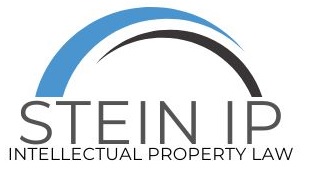- HOME
- > Blog Main Page
- > Main Relief Options to Keeping Your Business Afloat During The COVID-19 Crisis
Main Relief Options to Keeping Your Business Afloat During The COVID-19 Crisis

Whether you are an independent contractor, a self-employed individual, or a business owner with any number of employees, chances are there is a government-backed relief option to help you keep your business afloat during the COVID-19 crisis.
Your options may include the Paycheck Protection Program (PPP), the Economic Injury Disaster Loans (EIDL), Emergency Economic Injury Grants, Small Business Debts Relief Program, States’/DC’s workshare Programs/Plans, and potentially even unemployment insurance.
This post focuses on the main characteristic of the PPP and EIDL, as the PPP was recently created and the EIDL modified by the CARES Act and lists a few other relief options available.
The PPP: Payroll is reportedly the number one pressure on businesses during the COVID-19 crisis, therefore, the PPP is probably the most attractive relief program for those focused on making payroll in the next few weeks.
The PPP is a new program under the CARES Act that provides for loans wherein a portion or the entire loan might be forgiven if certain requirements are met.
Loan Size: The maximum amount a borrower can receive is 250% of your average monthly payroll costs for the last 12 months.
However, in the following cases the calculation is more complex and will not be based solely on the past 12 months:
- Seasonal employers
- Employers who were not in the business between Feb. 15, 2019 and June 2019
- Businesses that took or plan on taking EIDL between Feb. 15, 2020 and June 30, 2020
Potentially Forgivable Costs: No more than 25% of the loan forgiveness amount may be attributable to non-payroll costs; also, the loan caps a certain compensation to $100,000. Additionally, the amount not forgiven is carried forward as an ongoing loan with a maximum term of 2 years.
In order to have a loan forgiven a business needs to maintain its staff and payroll. Reductions in compensation amount and/or full-time employees will affect the amount of loan to be forgiven. As to compensation, the forgivable amount is reduced by the amount of any reduction in an employee’s total salary or wages in excess of 25% of the total salary or wages paid to the employee.
If a business has already reduced its employees’ compensation or the number of full-time employees between February 15, 2020 and 30 days after the enactment of the CARES Act (April 27, 2020), the business may rehire the same number of full-time employees no later than June 30, 2020 so as to avoid application of the reduction to forgivable amount.
Independent contractors can apply for the PPP by themselves. For this reason, employers cannot count their independent contractors as employees for purposes of PPP loan forgiveness.
Also, although the program is from Feb. 15, 2020, through June 30, 2020, it is limited to cover 8 weeks of operation.
Compensation portion in excess of $100,000 (1) is excluded from the definition of payroll; (2) is not considered in calculating loan size; and (3) is not forgivable.
Additionally, the interest rate is currently set at 1%, which previously had been set for 0.5%. Although this rate might change, by law, it cannot be above 4%. Interest payments are deferred for the first six months so if a business pays the loan within 6 months the business will not pay interest (also, there is no penalty for paying the loan earlier).
Finally, there are about 30 million small businesses in the U.S. and $349 billion allocated to the program and funds may run out before everyone can receive a loan. This program is on a first-come-first-served basis, and the applications opened on April 3, 2020. Accordingly, if you are planning on applying for a PPP program you should consider applying as early as possible.
The EIDL: The EIDL may be the most attractive option if a business has a low payroll. The CARES Act expanded EIDL eligibility for the period between January 31, 2020, and December 31, 2020, to include, for example, any business with not more than 500 employees, any individual operating under a sole proprietorship or as an independent contractor.
A business may obtain a PPP Loan if that business already received EIDL and/or Emergency Economic Injury Grant. However, the purpose of each loan cannot be the same.
Although EIDL does not offer any form of loan forgiveness, it includes a quick $10,000 grant to effected businesses that do not need to be repaid. The EIDL has two main components: (1) the grant of up to $10,000, and (2) the loan.
The maximum amount on the loan is $2 Million and the interest rates for EIDL are 3.75% for small businesses, and 2.75% for private non-profits.
If the loan amount is over $200,000, then the loan must be guaranteed by all stakeholders with a 20% or greater stake in the company. If the loan is for less than $200,000, then there is no requirement to guarantee the loan.
Other Relief Programs: Other types of relief include the Small Business Debts Relief Program, States’/DC’s workshare Programs/Plans, and maybe even unemployment insurance. The District of Columbia has a shared work program. Employers must, for example, certify that they plan to reduce work hours by no less than 20% and no more than 40% for workers in an affected unit, and that the “resulting reduction in work hours are in lieu of temporary layoffs that would affect at least 10% of all employees in the affected unit(s) and would otherwise result in an equivalent reduction in hours”.
Maryland has its work sharing program, and to see if eligible businesses should contact a representative at the work sharing program at the Maryland Department of Labor. Virginia does not currently have an operational workshare program.
Small Business Debts Relief Program: This program consists of three different types of loans: 7(a) loans, 504 loans, and microloans, each of them with different requirements. While there may be other loans covered by these programs, disaster relief loans are not eligible.
Workshare Programs: These programs are implemented by States (and the District of Colombia), and may vary from jurisdiction. For example, jurisdictions may have a different limit for reduced weekly hours of work for an employee in the affected unit.
Unemployment Insurance: In general, and in view of these other options do not seem ideal for some types of business, such as some sole proprietorship.
Conclusion: Independent contractors, self-employed individuals, sole proprietorships, or small businesses have several tools available in times of COVID-19 crisis, and businesses should act quickly to carefully review their relief options.
Please note that this post is not to be intended as a complete guide to these programs, and agency guidance and rates might change. Our firm provides a free initial consultation in which our attorneys will discuss relief options you or your business might have. You may also want to discuss related business matters with Stein’s COVID-19 Response Team, which has been created to assess and provide solutions to your business during the COVID-19 crisis.
References:
https://www.sba.gov/sites/default/files/2020-04/PPP--IFRN%20FINAL_0.pdf
https://www.congress.gov/116/bills/hr748/BILLS-116hr748enr.pdf

TAGS:
RECENT POSTS
